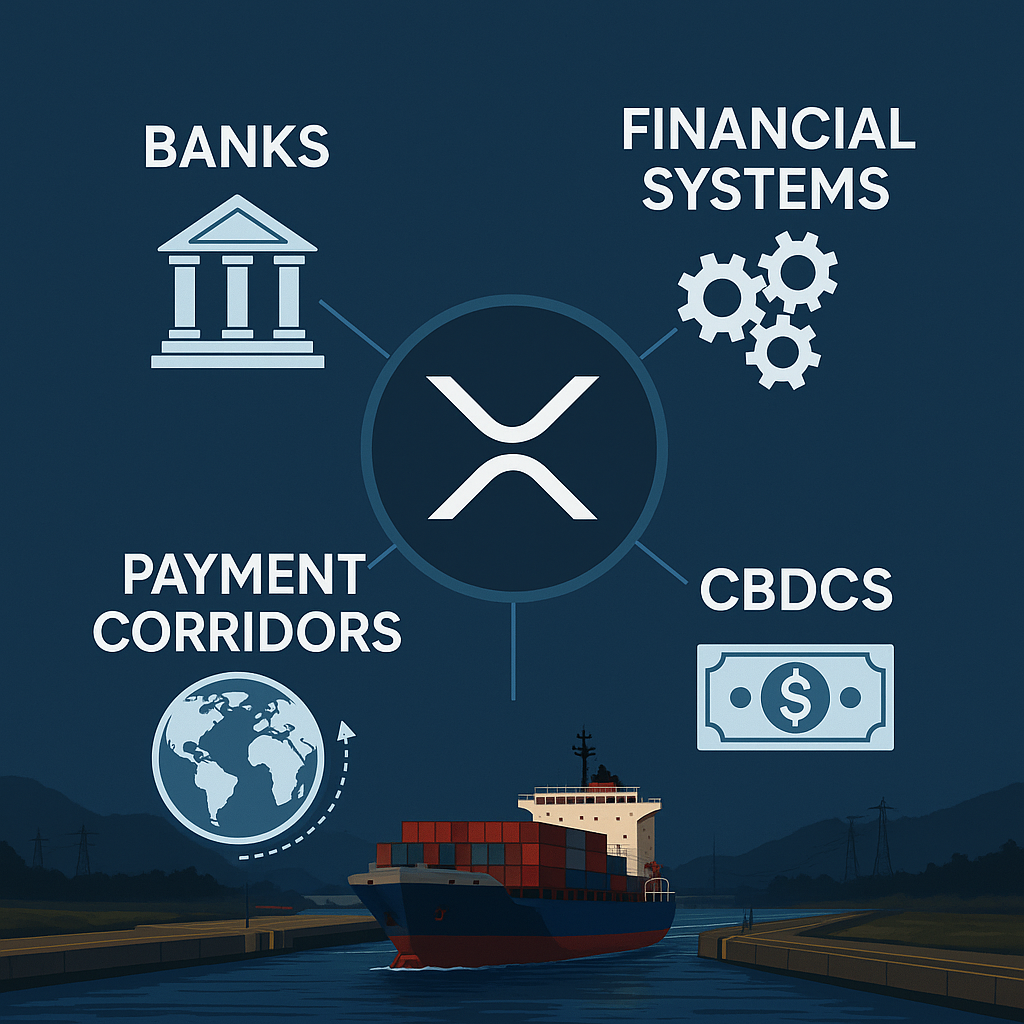For over a century, the Panama Canal has symbolized global trade dominance. But in today’s digitized world, it’s not just about moving cargo—it’s about moving capital. And just like standardized containers transformed global shipping, the XRP Ledger (XRPL) is on the verge of changing how money moves worldwide.
Ripple CTO David Schwartz recently powerfully compared modern financial infrastructure to the foundational protocols of the Internet. He referenced TCP/IP—the bedrock protocol that allowed data to flow freely across networks—as a blueprint for how value should move in the digital age.
🌐 From Canal Walls to Protocols: TCP/IP and XRPL
The opening of the Panama Canal in 1914 reshaped global commerce. It lets ships bypass inefficiency and unblock new routes for trade, which is what XRPL is now doing for money.
Schwartz argues that we need something in finance akin to TCP/IP—a universal, open, decentralized layer that anyone can build on. That’s what XRPL offers:
“Just like TCP/IP allowed interoperability across all networks, XRPL can provide the same open standards for value transfer.”
Watch David Schwartz speech and connect the dots in this must-see video:
💸 XRPL: The Digital Canal of Value
XRPL is more than a blockchain—it’s a decentralized financial protocol for real-time settlement. Like TCP/IP enabled the web, XRPL enables borderless liquidity.
- ⚡ Payments settle in 3–5 seconds
- 🌍 No need for pre-funded Nostro accounts
- 🔐 Open-source and highly scalable
This is the containerization of money—standardized, frictionless, and global.
🇺🇸 Trump, Panama & Financial Infrastructure
Interestingly, Donald Trump has recently hinted at reasserting U.S. control over the Panama Canal. While this symbolizes traditional power, the new battle for control is digital.
In the age of tokenized assets, central bank digital currencies (CBDCs), and blockchain bridges, the real question becomes:
Who controls the rails of value—not just ships, but settlements?
Ripple is answering that question through infrastructure, not ideology.
🐻 From Roosevelt Bears to Ledger Power
This moment echoes a historical one.
Our article on Roosevelt Bears and the XRP Revolution explored how early 20th-century control over trade reshaped the U.S. economy.
👉 Read: Roosevelt Bears and the XRP Revolution
Just as the Panama Canal empowered nations, the XRPL empowers networks of people, businesses, and even governments.
The bear may now be blockchain and the weapon—protocol.
📈 XRPL: Already at Work
While most are still watching Bitcoin and Ethereum, XRPL is quietly building a global footprint:
- ✅ 40+ markets integrated via RippleNet
- 💸 On-Demand Liquidity (ODL) live across continents
- 🌐 Cross-chain interoperability, stablecoin launches, and real-world use cases in banking and remittances
Like container ports took over maritime trade, XRPL is quietly replacing the financial docks.
🔮 Final Thought: The Next Panama Canal Is Code
The power of TCP/IP was that it worked quietly in the background—connecting everything.
The power of XRPL may be the same.
XRP’s shipping container moment is here.
And the protocol to unlock it already exists. It’s decentralized. It’s fast.
And it’s already running.
When most realize it, the financial world will already have changed course.
